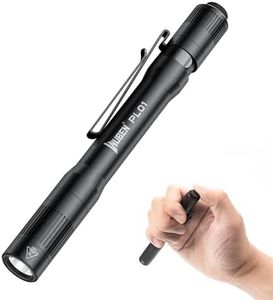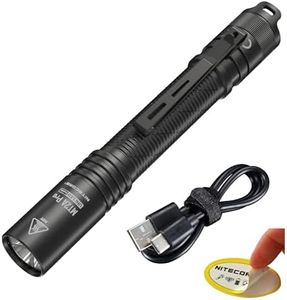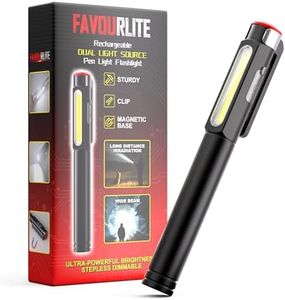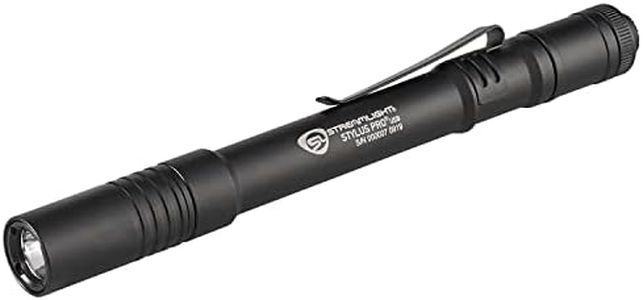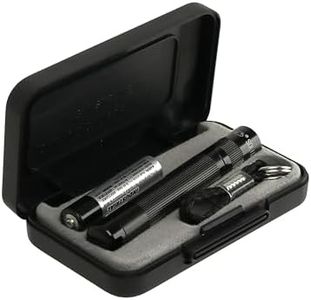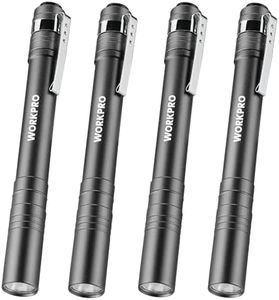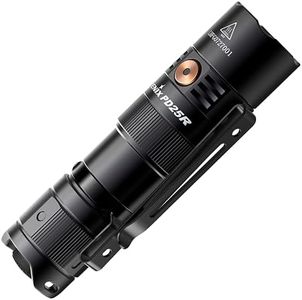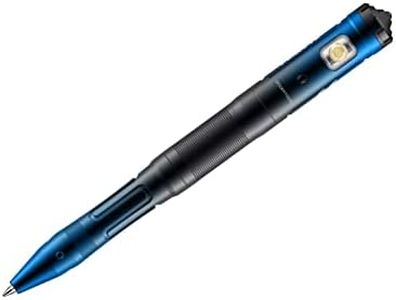We Use CookiesWe use cookies to enhance the security, performance,
functionality and for analytical and promotional activities. By continuing to browse this site you
are agreeing to our privacy policy
10 Best Pen Flashlights
From leading brands and best sellers available on the web.Buying Guide for the Best Pen Flashlights
When choosing a pen-flashlight, it's important to think about where and how you'll use it. Pen-flashlights are compact, lightweight, and easy to carry, making them ideal for everyday tasks, quick inspections, or professionals like mechanics and nurses who need a handy light source. The key is to match your specific needs with the features available, ensuring you end up with a tool that’s reliable and comfortable to use in your particular situations.Brightness (Lumens)Brightness is measured in lumens and tells you how much light the pen-flashlight produces. If you need a pen-flashlight for up-close tasks like reading maps, checking pupils, or inspecting tight spaces, a lower lumen output (20-50 lumens) is usually sufficient and saves battery life. Medium levels (50-100 lumens) provide a brighter beam for more general use, while high lumen ratings (over 100 lumens) are good for outdoor use or when searching in larger dark areas. Choose based on how far and how clearly you need to see.
Battery TypePen-flashlights are powered by various batteries such as AAA, AA, rechargeable lithium-ion, or even built-in USB rechargeable cells. AAA and AA batteries are easy to replace and widely available, making them convenient for frequent use. Rechargeable batteries are environmentally friendly and often save money in the long run, but require access to a charger. Consider how often you plan to use the flashlight and how easily you can recharge or replace batteries when needed.
Beam TypeThe beam type determines how the light is spread. Some pen-flashlights produce a narrow, focused beam which is ideal for seeing details in a specific spot (like examining electronics or machinery), while others have a wider beam which is better for general area lighting. Think about your typical use—if you need to pinpoint small details, pick a focused beam; for lighting up a larger area nearby, go for a wider beam.
Size and WeightPen-flashlights are designed to be slim and lightweight, but sizes do vary. Thinner and lighter models are easier to carry in your pocket, on a shirt clip, or even inside a medical coat, while slightly larger types may house bigger batteries for longer run time. Consider how you plan to carry the flashlight—if you want it to disappear into your pocket, go smaller and lighter; if you don’t mind a bit of extra bulk for more power, pick accordingly.
Durability and Water ResistanceDurability is important if you expect your pen-flashlight to handle daily knocks or exposure to moisture. Flashlights made from sturdy metals like aluminum offer better protection against drops, while water-resistant models can withstand rain or splashes. If you’ll use it outdoors or in tough environments, make sure it is rugged and has some degree of water resistance. For desk or indoor use, basic durability is often enough.
Clip and Carry OptionsMost pen-flashlights come with a pocket clip so you can attach them to your shirt, pants, or a bag. Some clips are reversible or removable. Think about where and how you want to carry your flashlight—if you need quick access, make sure the clip is strong and well-designed. For people who wear uniforms or lab coats, a secure clip that won’t snag or fall off is essential.
Switch TypeThe switch is how you turn the flashlight on and off and sometimes cycle through brightness modes. There are usually clicky tail switches or side switches. A tail switch is convenient for one-handed operation, especially if you’re using gloves or multitasking. Side switches can be easier to operate when the flashlight is clipped to your pocket. Think about what feels most natural and convenient for your usual use.
Light ModesSome pen-flashlights offer just a single brightness setting, while others provide multiple modes (such as high, low, strobe, or even a red light). More modes give you flexibility for different tasks; for example, low mode saves battery and is less glaring for close-up work, while high mode is helpful in dark areas. Choose a model with modes that match your typical jobs, but keep in mind that too many options can be confusing if you want something simple.
